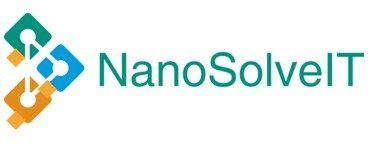About S2Nano
Home > About S²Nano > Partners
Partners
Collaborators
 |
ACEnano coordinated by University of Birmingham is developing a nano safety decision expert system (ACEnano Toolbox), which can be used for reliable safety evaluation of nanomaterials. | http://www.acenano-project.eu/ |
 |
NanoSolveIT coordinated by NovaMechanics Ltd. aspires to introduce a ground-breaking in silico Integrated Approach to Testing and Assessment (IATA) for the environmental health and safety of Nanomaterials (NM), implemented through a decision support system packaged as both a stand-alone open software and via a Cloud platform. | https://nanosolveit.eu/ |
 |
The SABYDOMA programme addresses developments in the safety by design (SbD) paradigm by examining four industrial case studies in detail where the TRLs will advance from 4 to 6. | https://sabydoma.eu/ |
 |
The Gov4Nano project will develop the first implementation of a future-proof operational Nano Risk Governance Model (NRGM) that addresses the needs of the transdisciplinary field and innovative (and key enabling) character of nanotechnology. | https://www.gov4nano.eu/ |


|
Hanyang University is located in Seoul, South Korea, has approximately 35,000 students (undergraduate 25,000 and graduate 10,000) and 3,700 faculty members and 1,000 staff; it is in the list of the world’s top 200 universities, with its chemistry department in the list of top 101-150 rank (QS WU Rankings by subject). Hanyang University began as the nation's first private College of Engineering, producing numerous specialists who have worked as the backbone of the nation's industrialization and modernization. | https://www.hanyang.ac.kr/web/eng |
 |
TO21 located in Seoul, South Korea, is a company to serve for registration of chemical substances, global regulatory affairs, risk assessment of chemical substances, chemical safety management services and chemical management services. TO21 Co. Ltd. is chemical management expert group, since 1999, more than 40 consulting experts in toxicity, environmental, public health, chemistry, regulation, legislation, etc. and has high quality in chemical DB such as MoE, National Chemical Information System(NCIS), MoE, GHS Classification System for Toxic Chemicals, MoE, Chemical Information Transfer Program within Supply Chain, MoE, Nano Safety InformationSystem, Industry, Chemical Management System, etc. | http://eng.to21.co.kr |
 |
Kangwon National University (KNU) was established in 1947 in Chuncheon, Gangwon-do, South Korea. Kangwon National University serves as the flagship educational institution of Gangwon-do. | http://www.kangwon.ac.kr/english/ |
 |
University of Birmingham is a public research university located in Edgbaston, Birmingham, United Kingdom. The university was ranked 14th in the UK and 79th in the world in the QS World University Rankings for 2019. Characterised by a tradition of innovation, research at the University has broken new ground, pushed forward the boundaries of knowledge and made an impact on people’s lives. | https://www.birmingham.ac.uk/ |
 |
Yoon Idea Lab conducts research to characterize physicochemical properties of nanoparticle and investigate the effects of nanomaterials on the human and the environment. The goal of Yoon Idea Lab's research is systematic understanding of nanoparticle interactions with biological and environmental systems, based on the fundamental principles of physics, chemistry, and biology. | |
 |
Korea Institute of Toxicology (KIT) is a government-funded research institute to evaluate the safety of medicine, bio- related products and chemicals such as agricultural pesticides, food additives, cosmetics, and nanoparticles. | https://www.kitox.re.kr/kitox_eng/main.php |
 |
https://www.krict.re.kr/ |
Sponsors
| Class | Sponsors | Introduction |
|---|---|---|
| Platinum |





|
- |
| Gold |

|
- |
| Silver | - | |
| Bronze | - |
Partner’s Tools
CORAL-QSAR/QSPR
Description
- CORAL- nanoQSAR/nanoQSPR
- Sometimes endpoints related to nano phenomena are mathematical function of "traditional" molecules. In such case, the nano-QSPR/QSAR are factually "traditional" QSPR/QSAR.
- Quasi- SMILES and nano QSAR/nanoQSPR
- Sometimes endpoints related to nano phenomena (particles, nanomaterials, peptides) are not a mathematical function of solely "traditional" molecules, i.e. physicochemical, biochemical, and other special "nano" conditions should be taken into account. This can be done via quasi- SMILES. The quasi-SMILES is "traditional" SMILES extended by special codes which reflect the above conditions.
- Index of Ideality of Correlation (IIC)
- Index of ideality of correlation (IIC) is a new criterion of the predictive potential for QSPR/QSAR as well as for nano-QSPR/QSAR. It is to be noted the improve statistical quality of a model for calibration set to the detriment of the training set.
Istituto di Ricerche Farmacologiche Mario Negri IRCCS, via La Masa 19, 20156, Milan, Italy.
andrey.toropov@marionegri.it / alla.toropova@marionegri.it
42(5): 606-613